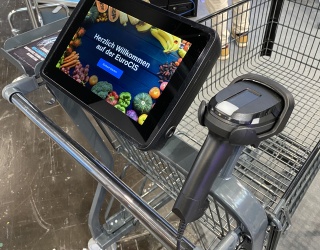
New research released today by Cotton USA reveals the latest shopping habits of UK consumers – including where and how consumers buy products, their financial optimism, qualities that motivate purchase decisions, and material preferences.
The findings, from Cotton USA’s Global Lifestyle Monitor (GLM), show that UK consumers feel positive about the cash in their pocket in 2018, with almost half of people (45 percent) saying they feel optimistic about their own personal finance. Compared to 2014’s findings, overall optimism is up by 8 percent.
The findings also show that Brits are continuing to shun man-made materials in favour of natural, high-quality fibres. Of those who said they would avoid buying certain materials, 28 percent of people refuse to buy polyester, 17 percent avoid synthetic acrylics, and 2 percent avoid rayon and viscose.
Additionally, when asked who or what is most responsible for garments made in a non-environmentally friendly way, manufacturers received the most blame from UK consumers (40 percent). This was followed by brands (21 percent) and, interestingly, the consumers themselves (17 percent).
When asked which fibres people feel are safe for the environment, cotton was found to be perceived as the safest (79 percent), and 69 percent of UK consumers also believe that cotton is the most sustainable fabric.
Nearly half of UK shoppers (45 percent) say they would pay more for clothing made from natural fibres, such as U.S. cotton, as opposed to only 4 percent who would pay more for synthetics. The most cited reasons for preferring natural fibres are that they are considered to be more comfortable (65 percent), of better quality (57 percent) and more durable (34 percent).
83 percent of UK consumers also say that cotton and cotton blends are the fibres they want in the clothing they wear most often, and 80 percent say cotton is best suited for today’s fashions. Reasons for preferring fibres such as U.S. cotton include comfort (75 percent), trustworthiness (72 percent), and softness (69 percent). Another 80 percent of consumers also associate the fibre with being authentic.
According to the research, 70 percent of UK consumers look at fibre content labels at least some of the time before purchasing a garment. Older generations were found to be most likely to look at fibre content labels, (75 percent), compared to younger consumers (63 percent).
Stephanie Thiers-Ratcliffe, International Marketing Manager at Cotton USA, said: “Across all parts of everyday life, consumers are becoming more conscious than ever before about how their actions impact the world we live in. Our findings truly reflect how this applies to the consumption of fashion and textiles, and really identifies the shift UK consumers have made in the past few years. However, despite these changes, British consumers continue to favour clothes and garments made from high-quality, natural fibres such as U.S. cotton – a trend that we at Cotton USA are confident will remain and strengthen in the future.”
Additional findings from COTTON USA’s Global Lifestyle Monitor research include:
- More than half of UK consumers enjoy shopping for apparel, suggesting a broad based interest in fashion and style, over 50 percent of women under 35 shop for clothes once per month or more
- Internet browsing is popular, especially with younger consumers. Nevertheless, concerns about purchasing apparel online remain. Primary issues are shipping costs (70 percent), clothing quality (67 percent) and return policy (58 percent)
- Chain stores (59 percent), department stores (56 percent), and discount stores (53 percent) are each cited as channels where a majority of UK consumers say they shop for clothing
- Consumers are most likely to say that fit (87 percent), comfort (84 percent), and price (79 percent) are most important to know before purchasing clothing
- When making clothing purchases, 39 percent of UK consumers say they make clothing purchases on impulse, a slight decrease from 2016, when 43 percentreported impulse shopping









